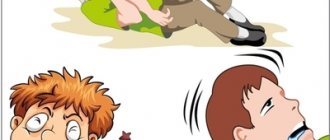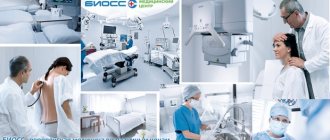Severe neurosis and asthenic neurasthenia
Reactive severe asthenia can occur with severe neuroses. The disease is complemented by the following clinical signs:
- absentmindedness;
- forgetfulness;
- autonomic disorders - unexplained difficulty breathing, sweating, changes in blood pressure, increased heart rate;
- high level of anxiety;
- increased fears and phobias;
- decreased sex drive;
- fluctuations in appetite;
- increased sensitivity to bright light and loud sounds;
- impaired speed and quality of thinking (cognitive dysfunction);
- concomitant depressive (affective) clinic.
However, the diagnosis of neurasthenia has now lost its relevance; it was removed from the ICD 11th revision (2019). The problem lies in the inaccuracy of the pathogenetic mechanisms, and the symptoms can be placed within the framework of other diseases and conditions.
In adult men
The course of affective disorders is individual, the dependence on gender is almost not expressed. However, men may have other prerequisites for developing the disease. For example, they more often become participants in hostilities or suffer financial (career) failures more difficult.
The social roles that are imposed on boys from an early age increase the demands placed on themselves. Young men start working earlier in an effort to achieve success, which exposes them to high levels of stress. We must not forget that personal characteristics are different for all people, that is, not everyone can withstand the pressure applied.
Over the years, the condition worsens due to chronic fatigue, family problems, and aging. Losing a job or wife in middle age often becomes a critical moment when adaptation mechanisms are disrupted. At the same time, men are less likely to go to doctors, not wanting to show their own weaknesses, or even completely deny the existence of a problem.
Among women
Now women are trying to share the same social functions as men, while caring for children and maintaining everyday life. An exaggerated sense of responsibility leads to them taking on too many responsibilities. Unofficially, psychiatrists call this the “hunted horse” syndrome.
Prolonged intellectual and psychophysical overstrain becomes a trigger for the development of affective disorders. Another common cause of asthenic depression in women is the pre/postpartum period. Violations are aggravated against the background of hormonal imbalance, as well as in the absence of support from loved ones.
In children
Unfortunately, children are also susceptible to developing the disease. The normal development of the psyche largely depends on obtaining a positive emotional experience, adequate upbringing, and a “healthy” social environment. Vulnerability is determined not only by age, but by a person’s personal characteristics.
Children may experience all the symptoms characteristic of asthenic depression. However, they cannot always correctly formulate their concerns or are completely silent about them. The painful condition is hidden behind complaints of boredom, strange pains, and restless sleep.
As the disorder worsens, the child begins to distance himself from others, stops taking part in games, and moves away from peers. A decline in academic performance leads to conflicts in the family and school. It is not uncommon to skip classes, run away from home, and spend time alone.
The appearance of depressive behavior at a young age should alert parents and teachers. Children often remain silent about bullying at school, cases of violence (including sexual violence), and disharmonious relationships in the family. Lack of timely treatment causes delayed psychomotor development, the occurrence of more severe diseases, and suicidal behavior.
Signs and symptoms of astheno-neurotic syndrome
The syndrome is manifested by physical fatigue, weakness, inability to engage in long-term physical and mental exercise, and increased irritability. A diagnosis can be suspected if the following clinical picture is observed: pronounced disorders of the autonomic nervous system; nonspecific subjective complaints about disturbances in the functioning of various organs; in some cases, in reality, there may be minor changes in their functions (for example, flatulence, hiccups). However, in general, the functioning of organs and systems is preserved. People of a hysterical disposition are especially susceptible to the manifestation of the syndrome.
In general, the symptoms of astheno-neurotic syndrome can be divided into:
- Somatovegetative disorders: dizziness, rapid heartbeat, chest pain, shortness of breath, feeling of lack of air or a lump in the throat, hand tremors, muscle spasms, sweating, nausea, stomach discomfort, frequent urge to urinate. These manifestations are often combined with phobias and anxiety.
- Somatoform disorders: complaints of various symptoms of diseases (short-term pain, burning, etc.), craving for new medical examinations in the absence of real pathologies.
Symptoms of ANS
Characteristic manifestations of asthenoneurosis are rapid fatigue and chronic fatigue. Children have difficulty shifting their attention, their thinking is inhibited, and their memory is weak. Schoolchildren are unable to concentrate in class, they are fussy, and motor reflexes are noticeable. Teachers usually recognize the initial phases of the syndrome as bad manners, so they complain to parents, but they are in no hurry to visit the clinic.
The next typical category of symptoms is psycho-emotional disorders. The child is subject to sudden mood swings for no apparent reason; he experiences nervousness and increased irritability. Usually there is a pathologically bad mood, which gradually develops into depression. Teenagers react too emotionally to even quite minor events. Typical symptoms of the disease are:
- moodiness;
- enuresis;
- frequent headaches;
- mood swings;
- weak immunity, prone to colds;
- irritability, manifestations of anger, aggression;
- increased sweating;
- loss of appetite;
- low academic performance;
- nausea in transport;
- poor social adaptation.
Asthenoneurosis is manifested by touchiness, the presence of phobias, aggression, and the search for physical ailments. Children feel broken and sick, although in reality there is nothing like that.
Forms, stages and types of astheno-neurotic syndrome
The disease develops in acute or chronic form. The first is of a functional nature; it appears after severe stress, an infectious or other severe somatic disease. The second (usually organic in nature) has a long course. This form also includes chronic fatigue syndrome.
The disease has several stages, depending on the strength, duration and nature of mental trauma:
- The hypersthenic stage is characterized by hyperexcitability, irritability, fatigue, and excessive reaction to minor stimuli. Over time, symptoms become more frequent and persist for a long time.
- The hyposthenic stage is characterized by physical and nervous exhaustion, depression, drowsiness, passivity, and decreased performance. Possible tachycardia, cardialgia, dizziness, intestinal dysfunction, disorders of the genitourinary system, loss of appetite.
From the point of view of etiology, a distinction is made between reactive neurasthenia, which occurs against the background of stress, excessive emotions, and secondary (somatogenic, organic).
The syndrome can manifest itself with a predominance of symptoms of mental fatigue - inability to concentrate, lack of concentration, absent-mindedness, weakening of memory, or physical ill health - general weakness, muscle pain, inability to relax. However, both forms are characterized by the following common symptoms: dizziness, headache, irritability, anxiety, sleep disturbance.
PsyAndNeuro.ru
In addition to the new mental and behavioral disorders in ICD-11 described in the previous part, we are publishing changes made to each of the major disorder groups in the ICD-11 chapter on mental, behavioral and neurodevelopmental disorders. These changes were made based on a review of the available scientific evidence by working groups and expert consultants.
The February issue of World Psychiatry Journal, which described the main changes in ICD-11, was translated by the Council of Young Scientists of the Russian Society of Psychiatrists. This part describes changes in the following groups: neurodevelopmental disorders; schizophrenia and other primary psychotic disorders; mood disorders; disorders caused by anxiety and fear, obsessive-compulsive and related disorders, as well as disorders directly related to stress.
List of diagnostic categories of the chapter on mental, behavioral and neurodevelopmental disorders in ICD-11:
- Neurodevelopmental disorders
- Schizophrenia and other primary psychotic disorders
- Catatonia
- Mood disorders
- Disorders caused by anxiety and fear
- Obsessive-compulsive and related disorders
- Disorders directly related to stress
- Dissociative disorders
- Eating and feeding disorders
- Disorders associated with the excretory system
- Disorders related to bodily self-awareness and bodily discomfort
- Substance use and addictive behavior disorders
- Impulse control disorders
- Defiant and dissocial behavior disorders
- Personality disorders
- Desire disorders
- Factitious disorders
- Neurocognitive disorders
- Mental and behavioral disorders associated with pregnancy, childbirth and the postpartum period
- Psychological and behavioral factors influencing disorders or diseases classified elsewhere
- Secondary mental or behavioral syndromes associated with disorders or diseases from other headings
Neurodevelopmental disorders
Neurodevelopmental disorders are those that are associated with significant difficulties in the acquisition and use of certain intellectual, motor, language and social functions and begin during the developmental period. The ICD-11 group of neurodevelopmental disorders includes such ICD-10 groups as mental retardation, psychological development disorders, and attention deficit hyperactivity disorder (ADHD).
Major changes to ICD-11 include the renaming of mental retardation in ICD-10, which was an outdated and stigmatizing term that did not adequately cover the range of forms and etiologies associated with the condition, as intellectual developmental disorders. Intellectual developmental disorders continue to be defined based on significant limitations in intellectual functioning and behavioral adaptability, ideally defined using standardized, appropriately normed, and individually tailored metrics. Given that different regions of the world have traditionally used different standards of measurement or trained personnel, and because of the importance of determining the severity of the condition for treatment planning, the ICD-11 CDDG provides a comprehensive set of tables with behavioral indicators.
Tables of intellectual functioning and adaptive behavior are separated. Functional areas are divided into three components: conceptual, social, practical; There are three age groups (early childhood, childhood/adolescence and adulthood) and four levels of severity (mild, moderate, severe, profound). Behavioral indicators describe those skills and abilities that are typically observed within each of these categories. Thus, it is expected that the level of confidence in severity profiles will increase and the quality of public health data regarding the burden of intellectual development disorders will improve.
Autism spectrum disorder in ICD-11 includes both childhood autism and Asperger's syndrome in ICD-10 under one category characterized by deficits in social communication and restricted, repetitive and inflexible patterns of behavior, interests or activities. Guidelines for autism spectrum disorder have been substantially updated to reflect current literature, including the life course manifestations of the disorder. The assessment criteria are designed to represent degrees of impairment in intellectual functioning and language skills and cover all aspects of autism spectrum disorder across a broad range of dimensions.
ADHD replaced hyperkinetic disorder in ICD-10 and was moved to the group of neurodevelopmental disorders due to its early onset, characteristic impairments in intellectual, motor and social functioning, and frequent co-occurrence with other neurodevelopmental disorders. This move was also intended to differentiate previously related ADHD from disruptive behavior and dissocial disorders, for the reason that in ADHD, disruptive behavior tends to be unintentional. ADHD in ICD-11 would be characterized as predominantly inattentive, predominantly hyperactive-impulsive, or mixed type and described across the lifespan.
Finally, chronic tic disorders, including Tourette's syndrome, are classified under ICD-11 as Disorders of the Nervous System and overlap with neurodevelopmental disorders due to their high comorbidity (eg, with ADHD) and typical early onset of development.
Schizophrenia and other primary psychotic disorders
In ICD-11, the group of schizophrenia and other primary psychotic disorders replaced the group of schizophrenia, schizotypal and delusional disorders from ICD-10. The term "primary" indicates that psychotic processes are the primary feature, as opposed to psychotic symptoms that may arise as an aspect of other forms of psychopathology (eg, mood disorders).
In ICD-11, the symptoms of schizophrenia remained virtually unchanged compared to ICD-10, although the importance of Schneider's first rank symptoms was reduced. The most significant change is the elimination of all subtypes of schizophrenia (paranoid, hebephrenic, catatonic, etc.) due to their lack of predictive validity or benefit in treatment selection. Instead of subtypes, dimensions were introduced. These include: positive symptoms (delusions, hallucinations, disorganized thinking and behavior, phenomena of mental automatism); negative symptoms (dull or flattened affect, alalia or impoverished speech, abulia, anhedonia); symptoms of depressive mood; symptoms of manic mood; psychomotor symptoms (psychomotor agitation, psychomotor retardation, catatonic symptoms); cognitive symptoms (particularly deficits in processing speed, attention/concentration, orientation, judgment, abstraction, verbal or visual learning, and working memory). These same symptom scales can be applied to other disorders in the group (schizoaffective disorder, acute and transient psychotic disorder, delusional disorder).
The ICD-11 diagnosis of schizoaffective disorder still requires that criteria for schizophrenia and a mood disorder episode be present simultaneously. This diagnosis is intended to qualify the current episode of a disease state and is not considered to be stable over time.
In ICD-11, acute and transient psychotic disorder is characterized by the sudden onset of positive psychotic symptoms that rapidly change in appearance and intensity over a short period of time and persist for no more than three months. This corresponds only to the ICD-10 "polymorphic" form of acute psychotic disorder, which is the most common form, and does not indicate schizophrenia. Non-polymorphic subtypes of acute psychotic disorder (ICD-10) have been excluded and will instead be classified in ICD-11 as “other primary psychotic disorders.” As in ICD-10, schizotypal disorder is classified in this group and is not considered a personality disorder.
Mood disorders
Unlike ICD-10, in ICD-11 episodes are not regarded as independent conditions, but as a basis for making a diagnosis that best matches the clinical picture. Mood disorders are divided into depressive disorders (which include single depressive disorders, recurrent depressive disorder, dysthymic disorder, and mixed depressive-anxiety disorder) and bipolar disorders (which include bipolar I disorder, bipolar II disorder, and cyclothymia). ICD-11 divides bipolar disorder into type I and type II disorders. A separate ICD-10 mood disorder subgroup group consisting of persistent mood disorders (dysthymia and cyclothymia) was removed.
The diagnostic guidelines for a depressive episode are one of the few places in ICD-11 where a minimum number of symptoms is required. This is due to many years of research and clinical tradition of conceptualizing depression in this way. A minimum of five of ten symptoms is required, rather than four of the nine possible symptoms listed in ICD-10, increasing consistency with DSM-5. To help clinicians conceptualize and recall the full spectrum of depressive symptomatology, the ICD-11 CDDG organizes depressive symptoms into three clusters—affective, cognitive, and neurovegetative. Fatigue is part of the neurovegetative cluster of symptoms, but is no longer considered an independent initial-level symptom; more precisely, for diagnosis, a daily low mood or decreased interest in activities must be observed for at least the last two weeks. Hopelessness was added as an additional cognitive symptom due to strong evidence of its predictive value in the diagnosis of depressive disorders. The ICD-11 CDDG provides clear guidance on differentiating culturally normative grief reactions and symptoms that require consideration when diagnosing a depressive episode in the context of bereavement.
To diagnose manic episodes, ICD-11 requires the presence of level 1 symptoms (increased activity, subjective feeling of energy) in addition to euphoria, irritability, or incontinence. This was done to prevent false positive diagnosis cases that correspond to normative mood swings. ICD-11 defines hypomanic episodes as a weakened form of a manic episode without significant loss of functionality. The description of mixed episodes in ICD-11 coincides with ICD-10, because there is evidence of the validity of this approach. The guide contains indications of typical bipolar symptoms when manic or depressive symptoms predominate. The presence of a mixed episode indicates a diagnosis of bipolar disorder, type I.
ICD-11 provides various tools to qualify a current episode of mood disorder or remission (partial or complete). Depressive, manic, and mixed episodes may occur with or without psychotic symptoms. Current depressive episodes in the context of depressive or bipolar disorders can be further characterized by severity (mild, moderate, or severe); melancholic symptoms correspond to somatic manifestations from ICD-10, and a persistent episode (protracted episode) must last more than two years. All mood episodes in the context of depressive or bipolar disorders may be complemented by the use of anxiety symptoms, the presence of panic attacks, and the presence of seasonality. It is also possible to qualify bipolar disorder with rapid cycling.
ICD-11 includes a category of mixed depressive and anxiety disorders due to their importance in primary care settings. Given evidence of shared symptomatology with mood disorders, this ICD-11 diagnosis was moved from the ICD-10 anxiety disorders category to depressive disorders.
Disorders caused by anxiety and fear
ICD-11 groups disorders with anxiety or fear as the main clinical feature in this new group. Consistent with the ICD-11 life course approach, this group includes separation anxiety disorder and selective mutism, both of which were classified as childhood disorders in ICD-10. In ICD-11, the distinction between phobic anxiety disorders and other anxiety disorders that existed in ICD-10 was eliminated in favor of a more clinically useful method of characterizing each anxiety and fear-related disorder according to its perceptual focus, that is, the description of the stimulus that evokes anxiety, excessive physiological reaction or maladaptive behavior.
Generalized anxiety disorder (GAD) is characterized by a general apprehension or worry that is not limited to any specific stimulus. In ICD-11, GAD has a more elaborate set of diagnostic criteria, reflecting advances in understanding its unique phenomenology. In particular, anxiety is added to the general perception as a basic symptom of the disorder. Unlike ICD-10, the ICD-11 CDDG indicates that GAD may co-occur with depressive disorders as long as symptoms are present regardless of mood episodes. Similarly, other hierarchical exclusion rules that were in ICD-10 (GAD cannot be diagnosed with anxiety-phobic disorder or obsessive-compulsive disorder) are also excluded due to better delineation of the phenomenology of the disorder in ICD-11 and evidence that these rules could interfere with the detection and treatment of conditions that require separate, specific clinical attention.
Agoraphobia is defined in ICD-11 as severe and excessive fear or anxiety that occurs in anticipation of, or in the immediate experience of, a situation where help is difficult or unavailable. The difference from ICD-10 is that it was previously described more narrowly as a fear of open spaces and associated situations, such as crowds of people, and may have difficulty leaving the area quickly; now the basis is fear for negative consequences that could lead to negative consequences or be cast in an unsightly light.
Panic disorder is defined in ICD-11 as recurrent, unexpected panic attacks that are not limited to specific stimuli or situations. The ICD-11 CDDG indicates that panic attacks that occur only in response to a specific stimulus or in anticipation of a feared stimulus (eg, public speaking in social anxiety disorder) do not require an additional diagnosis of panic disorder.
Rather, in such cases, the classification “with panic attacks” may be added to the diagnosis of anxiety disorder. The categorization “with panic attacks” may also be applied to other disorders where anxiety may be a prominent but not a defining symptom, such as in some patients with a depressive episode.
Social anxiety disorder in ICD-11 is based on the fear of negative evaluation from others and replaces the ICD-10 diagnosis of “social phobia.” The ICD-11 CDDG specifically describes separation anxiety disorder in adults, which most often occurs in association with a romantic partner or child.
Obsessive-compulsive and related disorders (OCRD)
The introduction of OCRD into ICD-11 represents a significant change from ICD-10. The rationale for creating the OCRD group, as distinct from the anxiety-phobic disorder group, despite phenomenological overlap, was the clinical benefit of grouping the symptoms of recurrent unwanted thoughts and associated repetitive behaviors as a core clinical feature. The diagnostic consistency of this grouping is based on emerging evidence of common validators among the included disorders from neuroimaging, genetic, and neurochemical studies.
ICD-11 OCRD includes obsessive-compulsive disorder, dysmorphia, olfactory disorder, hypochondria (obsessive fear of illness) and pathological hoarding. Equivalent disorders in ICD-10 were located in different groups. OCRD also includes a subgroup of body-focused repetitive behavior disorders that include trichotillomania (hair pulling disorder) and excoriation disorder (skin picking/picking disorder), both of which share the common feature of repetitive behavior patterns without the cognitive aspect of other OCRDs. Tourette's syndrome, in ICD-11, is a disease of the nervous system, but is also included in the OCRD group due to its frequent combination with obsessive-compulsive disorder.
ICD-11 retains the core features of obsessive-compulsive disorder from ICD-10 (persistent obsessions and/or actions), but with some important changes. ICD-11 expands the concept of obsessions beyond obsessive thoughts to include unwanted images and urges/impulses. Moreover, the concept of coercion expands to include, but is not limited to, covert (e.g., counting) as well as overt, repetitive behavior.
Although anxiety is the most common affective experience associated with obsessions, ICD-11 explicitly mentions other phenomena reported by patients, such as disgust, shame, a feeling of “incompleteness,” or anxiety when things don’t look or feel “right.” . OCD subtypes that existed in ICD-10 were removed because most patients reported both obsessions and compulsions and because they had no impact on treatment prognosis. The impossibility of simultaneous diagnosis of OCD and depressive disorder, which existed in ICD-10, was abolished in ICD-11, because this reflects the high incidence of co-occurrence of both disorders, which require different treatments.
Hypochondriasis (obsessive fear of illness), due to its common phenomenology and patterns of common origin, is located in OCRD rather than among the group of anxiety and fear-related disorders, even though health concerns are often associated with anxiety and fear. However, hypochondriasis (obsessive fear of illness) is also listed under the group of anxiety and fear-related disorders, suggesting some phenomenological overlap. Dysmorphic disorder, olfactory disorder and hoarding are new categories that have been included in the ICD-11 group OCRD.
The cognitive component in OCRDs (beliefs) may be expressed with such intensity or persistence that they appear delusional. When these fixed beliefs are fully consistent with the phenomenology of OCRD and there are no other psychotic symptoms, the classification “with weak or absent insight” should be used and a diagnosis of delusional disorder should not be made. This approach is designed to help prevent people with OCRD from being treated for psychosis when they do not need it.
Disorders directly related to stress
The group of disorders specifically related to stress in ICD-11 replaces the ICD-10 group "Reactions to severe stress and adjustment disorders" to emphasize that stress is a necessary but not sufficient component in the etiology of these disorders, and also to distinguish between those included in this group. a group of disorders from various other mental disorders that occur in response to stressors (eg, depressive disorders). In accordance with the ICD-11 approach to considering disorders over the life span, ICD-10 diagnoses such as reactive attachment disorder and disinhibited attachment disorder of childhood are included in this group because these disorder disorders are directly related to attachment stress. ICD-11 includes several important conceptual updates to ICD-10—the introduction of complex PTSD and protracted grief disorder, which have no counterparts in ICD-10.
PTSD is defined by three features that must be present in all cases and must cause significant impairment. These include: re-experiencing the traumatic event in the present (flashbacks), deliberate avoidance of reminders that may trigger the re-experiencing, and a persistent sense of heightened threat in the present. Including a requirement to re-experience cognitive, affective, or physiological aspects of the trauma, rather than simply remembering the event, is expected to address the low diagnostic threshold for PTSD that existed in ICD-10.
Adjustment disorder in ICD-11 is diagnosed if there is an underlying “preoccupation” with a negative life event or its consequences, while in ICD-10 the disorder was diagnosed if symptoms arising in response to a life stressor did not meet certain requirements of another disorders.
Finally, in ICD-11, acute stress reaction is no longer considered a mental disorder, but is understood as a normal reaction to an extreme stressor. And now it is classified in the chapter “Factors influencing or related to health” and is not duplicated in the group of disorders directly related to stress. This is done to facilitate differential diagnosis.
Translation into Russian was organized by the Council of Young Scientists of the Russian Society of Psychiatrists with the support of the World Psychiatric Association.
Support us by subscribing to Patreon
Translation: Pikirenya V.I. (Minsk)
Editor: Ph.D. Reznikov M.K. (Voronezh)
Source: Reed GM, First MB, Kogan CS, et al. Innovations and changes in the ICD-11 classification of mental, behavioral and neurodevelopmental disorders. World Psychiatry
. 2019;18(1):3–19. doi:10.1002/wps.20611
Astheno-neurotic syndrome in children
Children are characterized by lability of neuropsychic processes and rapid fatigue, so any somatic or infectious diseases can be accompanied by symptoms of asthenia. The longer the disease lasts, the higher the likelihood of developing a neurotic syndrome.
Prerequisites for asthenia include increased stress at school and in extracurricular activities (clubs, sections). The risk of developing neurotic syndrome is increased in those who have an unhealthy microclimate in the family, school, and problems in relationships with peers.
A special category consists of children who had lesions of the central nervous system during fetal development, during childbirth or in the early neonatal period. This may become an additional risk factor for the development of astheno-neurotic syndrome.
How to recognize the disease
Fatigue and tiredness are a normal reaction of the body to stress. We should talk about a disease when this condition does not go away even after a long rest or change of activity and persists for 2–3 weeks.
Symptoms that require you to consult a doctor:
- Nothing makes me happy. Things that used to bring you pleasure (hobbies, watching your favorite movies or hanging out with friends) begin to irritate, tire you, or bring tears to your eyes.
- Sleep disorders: you can’t fall asleep for a long time at night or have restless sleep, and during the day this makes you drowsy.
- Rest does not eliminate fatigue.
- Feeling exhausted after a load that was previously possible. Moreover, reducing the amount of work done does not improve the condition.
- Painful sensitivity to light or loud noise.
- A reduced mood level persists no matter what events happen in your life - good or bad.
- Mental abilities deteriorate, memory decreases. It becomes more difficult to concentrate on everyday activities, and absent-mindedness appears.
The most important thing is that the above symptoms persist for at least 2 weeks.
Important
Fatigue and depression may be accompanied by short-term vegetative crises (panic attacks). Without treatment, the disease “locks” a person at home, and panic does not allow him to even go outside.
Predisposed individuals are at risk of developing astheno-depressive syndrome with panic attacks. Short-term episodes of severe fear, panic with palpitations, cold sweat, and a feeling of shortness of breath can lead to a decrease in social contacts, loss of work, and even self-isolation of the patient.
Diagnosis of the disease
The diagnosis of astheno-neurotic syndrome is established by a qualified specialist - a neurologist or psychotherapist after a clinical and anamnestic examination. Pathopsychological research is carried out by a medical psychologist, recording deviations from the norm by conducting special tests on the way of thinking, memory, and concentration.
To identify the causes of this condition and exclude organic lesions of the central nervous system, echoencephalography, electroencephalography, computer and magnetic resonance therapy are performed. If necessary, a consultation with specialists is prescribed - a neurologist, sexologist, psychiatrist.
Prevention of asthenia
Sarklinik has developed an effective program “ Prevention of asthenia ”, which allows you to avoid future exhaustion of the nervous system. A healthy nervous system is a reality today. The peculiarity of the disease is that the symptoms slowly, gradually, but clearly increase, and the condition worsens sharply. Do not expect dangerous complications of asthenia, asthenic syndrome; contact Sarclinic for timely treatment.
Sign up for a consultation. They have contraindications. Specialist consultation is required.
Photo: (©) Bds | Dreamstime.com \ Dreamstock.ru The people depicted in the photo are models, do not suffer from the diseases described and/or all similarities are excluded.
Related posts:
Logoneurosis: treatment of logoneurosis in children, adults, how to treat
Incontinence, treatment of incontinence in Saratov, Russia, symptoms, signs, causes, types
Trigeminal nerve, inflammation, treatment, trigeminal neuralgia, symptoms, how to treat
Neuralgia and neuritis, intercostal neuralgia: symptoms, treatment in Saratov
Transient ischemic attack: symptoms, treatment of the brain
Comments ()
How to treat astheno-neurotic syndrome?
The goal of treatment is to achieve stable remission. It is carried out in three main areas:
- etiopathological treatment;
- nonspecific, restorative and immunocorrective therapy;
- symptomatic therapy.
Drug therapy supplemented with psychotherapeutic methods has a positive effect. A psychotherapist helps to find out and understand the causes of the disease, to form the right attitude towards it through individual and group classes, trainings, art therapy, cognitive behavioral therapy, etc.
The basis for the treatment of astheno-neurotic syndrome in children is non-drug methods aimed at normalizing the child’s lifestyle. Parents must monitor not only the child’s compliance with the daily routine, diet, and avoid overload, but also the preservation of psychological comfort in the family and educational institution (sometimes it may be necessary to change schools). The diet should consist of foods rich in B vitamins (offal, whole grain bread, eggs), tryptophan (lean meat, cheeses). It is recommended to exclude carbonated drinks, chips, and crackers. Additional conversations should be held with teenagers about the harm of alcoholic drinks and energy drinks, which give a feeling of cheerfulness for a short time, but generally worsen the patient’s condition. To resolve internal conflicts, eliminate traumatic situations or change attitudes towards them, long-term work with psychologists is indicated.
Cure for astheno-neurotic syndrome
The treatment strategy can be divided into three basic areas:
- etiopathogenetic treatment of the underlying disease;
- nonspecific, restorative and immunocorrective therapy;
- symptomatic therapy.
For psychopharmacological therapy, drugs of different groups are used: vitamin-mineral complexes, antidepressants, nootropics, tranquilizers and antipsychotics.
During the treatment of astheno-neurotic syndrome, vitamins, macro- and microelements are recommended. In particular, the patient’s body needs a greater supply of vitamin C, which is typical for the recovery period after serious illnesses or prolonged stay in stressful situations. A lack of B vitamins is recorded in the case of somatogenic asthenia. And vitamin B5 (pantothenic acid) is generally called an anti-stress vitamin. Vitamin B2 (riboflavin) is involved in energy metabolism, which is also important for increasing the patient’s tone. Iron, phosphorus, manganese are indispensable for the normal functioning of enzymes involved in energy processes. Potassium and magnesium also play a significant role in the treatment of manifestations of astheno-neurotic syndrome.
Basic therapy for astheno-neurotic syndrome is tranquilizers and antidepressants. If the syndrome is combined with expressive hysterical, hypochondriacal manifestations, or phobias, low doses of antipsychotics are added to the basic therapy. The choice of drug, dose and course of treatment is determined by the doctor.
Among over-the-counter drugs, homeopathic remedies (Hepel) and sedative herbal medicines (valerian extract, Persen, Novo-Passit) have proven themselves well.
Non-drug methods of treating the disease (as well as its prevention) include: a healthy lifestyle, moderate physical activity, adequate sleep, and giving up bad habits.
List of used literature
- Grishchenko E.V. Methods for correcting asthenic syndrome in outpatient practice // “medical council”, 2012 - p. 36-37
- Kolyutskaya E. V. Modern approaches to psychopharmacotherapy of anxiety disorders // Pharmaceutical Bulletin: information and analytical newspaper. 2005. - p. 112-116
- Vein L. M., Voznesenskaya T. G., Vorobyova O. V. et al. Autonomic disorders: clinical picture, treatment, diagnosis / ed. A. M. Veina. M.: medical information agency. - 1998. - 752 p.
Popular questions about astheno-neurotic syndrome
How dangerous is astheno-neurotic syndrome?
If not treated in time, it can cause hormonal disorders, disorders in the digestive tract (stomach ulcer), cardiovascular system (up to the development of heart attacks and strokes), the development of depressive states, and the appearance of suicidal thoughts.
How long to treat astheno-neurotic syndrome?
The drug and course of treatment are determined by the patient’s condition and concomitant pathologies, and therefore are prescribed by the doctor individually.
Which doctor treats astheno-neurotic syndrome?
Neurologist, psychotherapist.
Treatment of asthenovegetative syndrome
If asthenovegetative syndrome is detected in the early stages, then in this case you can do without medication treatment; it will be enough to give up heavy loads of any nature, normalize your lifestyle and diet, and sometimes just rest. In more complex cases, complex therapy is used, which includes: taking vitamins, massage and physical therapy, electrophoresis, baths with soothing essential oils. Neurometabolic drugs and herbal nootropics may also be prescribed.
In the most severe cases, medication cannot be avoided. Antidepressants (antipsychotics and antipsychotics) will help correct the patient’s condition. An individual approach is very important, taking into account age (a child and an adult have different nervous systems) and the general condition of the body. With the level of modern medicine, the development of the disease can be easily minimized.










